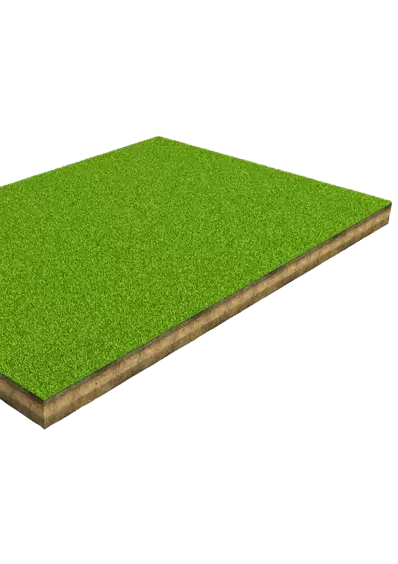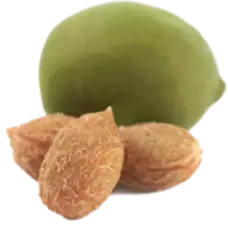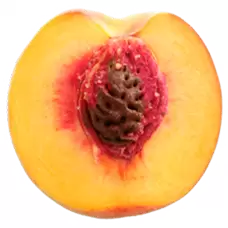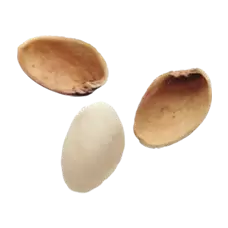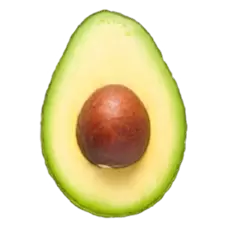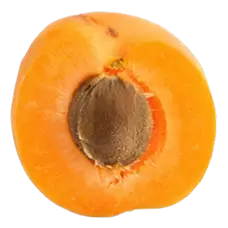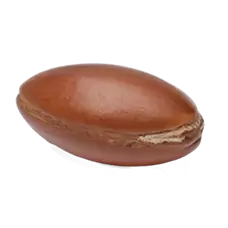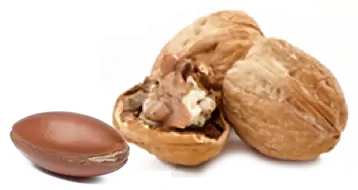Olive Stone Infill Material and Sand for Artificial Grass
Artificial grass sand infill with a high weight is often used to create a stable base layer. On top of it, a more elastic artificial grass infill is added in varying quantities. This surface layer is exposed to movement by sportspeople and degradation by the elements. Hence, it is crucial for sports turf designers to choose an artificial grass filler solution that is not easily eroded by wind and weather but that has similar properties as sand for artificial grass.
To ensure lasting stability of the turf while providing a biodegradable artificial grass infill solution, the BioPowder.com team has created Olea Fill. In consideration of the commonly used sports turf infill made of rubber, we have developed a fully natural artificial grass filler on the basis of recycled olive stones. Our homogeneous, dust-free granular artificial grass infill unites a number of advantages such as
- ideal weight and density, i.e. lighter than sand for artificial turf and heavier than microplastics or cork. This creates a good elasticity effect and a slower degradation by wind and moisture – hence, a longer lifespan.
- smooth particles shape: Olea Fill granules have no sharp edges, which prevents injury of athletes when sliding. They integrate smoothly with artificial grass sand and have similar particle textures.
- light beige, natural color: integrates well with nature-inspired landscaping projects in which artificial grass sand is being used.
- resistance: olive stone does not change shape or texture when exposed to rain or varying temperatures. The natural artificial grass infilldoes not swell or float and therefore keeps its effectiveness even under harsh weather conditions. When applied on a bed of sand for artificial turf, the creation of a high-performance multilayer artificial grass filler structure is made easy.
- easy disposal: a 100% plant-based artificial grass infill solution that produces zero waste
- sustainability: in contrast to silica-based products (sand for artificial grass)such as envirofill infill, Olea Fill is made exclusively from bio-based side-stream resources. At BioPowder.com we do not process any crops or mined minerals.
From all the available artificial grass infill options, Olea Fill combines the best value-for-money with performance, durability, aesthetics and eco-friendliness. In some instances, BioPowder.com artificial grass infill granules can also be suitable as fillers for natural grass.
Frequently Asked Questions (FAQ): Artificial Grass Infill with Sand
1. Why do they put sand on artificial grass?
The sand essentially has a reinforcing function. When it is filled between the grass blades, it creates a solid base to reinforce the artificial grass system. It essentially ensures that the grass blades keep their upright position, even when subject to high load or utilization. Due to its high weight and density, and also creates a heavy base, which keeps the grass carpet in shape.
2. How much sand do you put under artificial grass?
There is no general rule. It depends on the artificial grass system you are using, i.e. type and length of the grass blades. The heavier the sand, the less material is generally necessary to achieve the stabilizing effect mentioned under 1. Specialized artificial grass infill sand comes in many forms and in various grain sizes. The smaller the grain, the better it sinks down to the basis and hence the higher the efficiency. The artificial grass sand infill layer in most artificial turf systems is several centimeters high.
3. What kind of sand do you use for artificial grass?
The most commonly used sand for artificial turf is silica sand. It comes in many grain sizes and is often natural. Due to the relatively sharp edges of the particles, some manufacturers opt for synthetically manufactured sand with rounded edges, e.g. made from quartz particles. Certain suppliers also offer colored infill sand for a better aesthetical effect.
4. Can you put too much sand on artificial grass?
The thickness of the sand infill artificially grass layer should always be a fraction fo the length of the grass blades. Any artificial grass infill is essentially used for stabilization. If too much infill is used, the grass might become somehow "inert", which results in a higher perceived surface hardness. Also, too much artificial grass infill sand will be eroded faster by the elements than deeper layers that sit firmly at the base of the grass blades. Another issue that can arise from too much artificial grass infill sand is restricted drainage.
5. How do you sand fill artificial grass?
When artificial turf is laid, specialized filling machines are used to make sure the artificial grass infill sand is placed well at the bottom, i.e. that it forms a solid base layer on the grass carpet. Due to its heavy nature, it is important to use sand as the bottom layer so that any softer and/or more elastic artificial grass infill can be placed on top. In two-component infill systems, our Olea Fill olive stone granules are generally placed upon a sand layer.
6. Does artificial grass need sand infill?
Certain artificial turf systems are made to be infill-free. However, the higher the load and utilization of a grass surface, the more an infill is needed for stability purposes. Sand for artificial turf essentially keeps the grass upright and also protects the blades from weathering influences or UV radiation. This can enhance the lifespan of any turf system. In certain artificial lawn systems, sand can be rplaced bycompostable infill granules such as BioPowder.com Olea Fill that is made from recycled olive stones.
7. Can you make bespoke artificial grass infill granules?
Yes. Besides certain standardized grades, we offer tailored solutions - both in terms of grain size and particle treatment / hydrophobicity coating. This refers to Olea Fill, our olive stone infill which is generally applied on top of artificial grass sand. To make sure that every customer receives the best artificial grass infill, we are open to processing our natural raw materials into any possible particle size ranges. Depending on the climatic conditions in which the artificial turf infill is to be used, we can apply different surface treatments in order to improve the lifespan of our artificial grass infill.
8.Can you use regular sand for artificial grass?
In principle, any sand can be used as an artificial grass infill. Common, natural sand is certainly the most inexpensive solution but also has its downsides: the particles are often irregularly shaped, which leads to sharp edges. This increases the risk of scratches and injuries for anyone playing sports on the artificial lawn. A better solution is specialized artificial grass sand infill, mostly made from quartz, which has smooth, rounded particle shapes.
9. Where do the raw materials for your artificial grass infill come from?
All our natural raw material providers are located in proximity to our production facility in Southern Spain. Hence, our range of artificial grass infill is made from local by-products by local people.
10. Where do you ship your artificial grass infill to?
Thanks to our global logistics network and our flexibility, we can deliver our artificial grass infill to any destination worldwide. Due to the relatively large volumes, we export by the metric ton and therefore recommend ocean freight as the preferred shipping option.
11. What is the availability of your artificial grass infill?
As a leading specialist for natural additives and artificial grass infill, we strive to fulfil our orders in a timely and 100% reliable manner. Our long-standing market experience and stable procurement conditions allow us to produce and store large volumes. Especially due to regular refill requirements, we make sure that you receive the best artificial grass filler on a continuous basis. Therefore, we can fulfil long-term supply contracts and are pleased to receive recurring orders.
Please contact us with your artificial grass infill project and/or if you look for an artificial grass infill to be combined with artificial grass sand.

